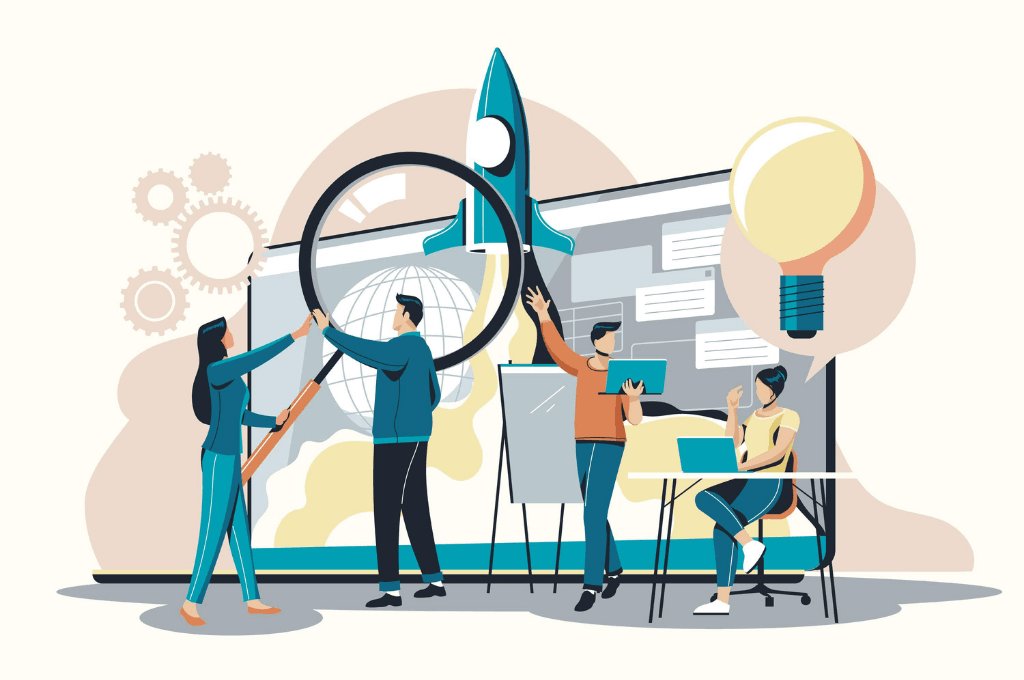In the digital age, software as a Service (SaaS) design has changed how companies access and utilize Software by offering a scalable and flexible platform to meet various demands. As this model becomes increasingly attractive, understanding how SaaS billing works is crucial, given the direct impact on SaaS development cost and business sustainability. This guide explains how SaaS billing works, its components, and best practices so that businesses can develop effective billing strategies that fit their service offerings and market needs.

1. Basics of SaaS Billing
SaaS billing is more than a business transaction; it’s a way of living. It is the lifeline of the SaaS business model that creates recurring revenue and customer interaction. Unlike traditional one-time purchases, SaaS billing is based on subscription models where users pay a per-use fee for accessing the software. This model reflects the ongoing nature of SaaS services, which offer updates, support, and scalability.
At its heart, SaaS billing reflects the dynamic usage and scalability of cloud services. It supports flat-rate monthly subscriptions and tiered pricing models based on usage, features, or user counts. This flexibility enables SaaS vendors to serve small and large enterprise clients with differing requirements and use patterns.
Information Use !!
Concerned about online trackers and introducers tracing your internet activity? Or do you face geo-restrictions while streaming? Get NordVPN – the ultra-fast VPN trusted by millions, which is available at 69% off + 3 Months Extra. With the Double VPN, Split tunneling, and Custom DNS, you can experience internet freedom anytime, anywhere.

Both providers and customers need to understand SaaS billing. For providers, it directly impacts revenue streams, cash flow, and customer satisfaction. For customers, it affects the perceived value of the service and the transparency of costs. Consequently, effective SaaS billing practices are crucial to creating trust, keeping clients, and increasing SaaS offerings in the long run.
2. Key Components of SaaS Billing
SaaS billing includes several key Components that affect the structure and efficiency of the Billing process. Understanding these elements can help SaaS providers create more transparent and user-friendly billing:
- Subscription Models & Pricing Tiers: Most SaaS companies offer several subscription models to suit their various customer bases. They can be basic plans with limited features or premium plans with advanced functionalities. Pricing tiers may be based on the number of users, certain features, or storage space, allowing businesses to scale services as needed.
- Billing Cycles & Payment Gateways: The billing cycle defines how often customers are billed (monthly, quarterly, annually, etc.), and payment gateways handle customer payments. The choice of the billing cycle and integration of reliable payment gateways are key to maintaining cash flow and customer satisfaction.
- Invoicing, Taxes & Compliance: Invoicing practices should be clear, accurate, and timely to avoid ambiguity and disputes. There are also tax regulations and global standards to comply with, which can vary significantly from region to region and affect the final pricing customers see.
3. SaaS Development Cost and Pricing Strategy
The development cost of a SaaS product is an important factor that impacts its pricing strategy. SaaS development costs might include costs for initial research and software development, security and infrastructure, and ongoing support and maintenance. Knowing these costs helps you set a price that covers costs but is still competitive and attractive to customers.
A thoughtful pricing strategy should reflect the value the software offers its users and the willingness of the marketplace to pay. It should also offer flexibility, enabling consumers to select the plan that best fits their spending and usage demands. Transparency around pricing tiers versus features or services can prevent billing disputes and build customer trust.
4. Implementing SaaS Billing Solutions
There are a few steps in Implementing an effective SaaS billing system:
- Setting Up the Billing System: Pick a billing platform that supports recurring payments, subscriptions, and scaling as your business grows. It should integrate with your existing systems, like CRM and accounting software.
- Integration with Other Systems: Data consistency and operations are achieved through seamless integration of the billing system with other business systems (CRM, ERP, accounting). This integration is critical to provide a complete picture of customer interactions and financial status.
- Security & Privacy Considerations: Given the sensitive nature of billing information, customer data protection and privacy is a priority number one. Respect industry standards and regulations like PCI DSS and GDPR to safeguard customer information and build trust.
5. Best Practices in SaaS Billing
Best Practices in SaaS billing can improve operational efficiency and customer satisfaction.
- Transparent Billing: Make your billing policies clear. Give detailed breakdowns of charges in invoices and communicate changes to billing policies early on.
- Adaptive Pricing Models: Offer various pricing models to match different customer needs and usage patterns. Consider usage-based pricing or tiered pricing structures to meet different customer demands.
- Regular Review and Adjustment: Regularly review your pricing and billing strategies to ensure they remain competitive and align with market trends. Open to adjusting your pricing based on customer feedback and usage data.
- Customer Onboarding & Education: Create an onboarding process to educate new users on your billing practices. Clear guides, tutorials, and FAQs can avoid ambiguity and reduce billing-related inquiries.
- Proactive Communication: Open up your communications with customers about their subscriptions and any upcoming pricing or policy changes. This proactive approach can avert surprises, reduce churn, and build trust.
- Feedback Loops: Establish mechanisms to collect and analyze customer feedback pertaining to billing. This insight can help you make improvements and innovations in your billing strategy to meet customer expectations and market demands.
6. Challenges with SaaS Billing
SaaS billing can cause several challenges, such as:
- Complex Billing Scenarios: Upgrades, downgrades, and prorations are complex. Make sure your billing system can handle these changes to avoid customer frustration.
- International Billing Problems: Multiple currencies, tax regulations, and payment methods can make billing difficult for global customers. Buy a billing system that supports international transactions and tax compliance.
- Customer Disputes & Churn: Inaccurate billing can cause customer disputes and higher churn. Establish processes to resolve billing issues to retain customer trust and loyalty quickly.
- Data Security & Privacy: Billing systems store sensitive financial data and thus are easy targets for cyber attacks. Advanced security protocols and periodic audits can prevent breaches and maintain customer trust.
- Subscription Fatigue: With more services being subscribed to, consumers may become subscription-fatigued and hesitant to sign up for new recurring payments. This challenge requires demonstrating clear value and offering different subscription options to suit different customer needs.
- Regulatory Compliance: It can be overwhelming to navigate the myriad of global regulations including GDPR, CCPA, and industry-specific standards. Compliance with existing laws and adaptation to them is resource-intensive but essential for global operations.
7. Future Trends in SaaS Billing
Few emerging Trends may define the future of SaaS billing:
- More Automation: Automation in billing reduces errors, saves time, and improves customer experiences. More SaaS companies will undoubtedly implement automated billing systems that can handle complex scenarios with little manual intervention.
- Personalized Pricing: With better data analytics and customer segmentation, personalized pricing models based on usage patterns and customer value may become more common.
- More Flexibility & Customization: Customers expect more flexibility and customization in their subscriptions. SaaS companies may provide more granular billing to meet this demand.
- AI & Machine Learning: Using AI and machine learning can deliver predictive analytics, personalized pricing, and automated customer segmentation. These technologies can help SaaS businesses optimize their billing models and enhance customer experiences.
- Blockchain Technology: Blockchain could enable SaaS billing to offer more transparent and secure transaction records. Smart contracts could automate billing, reduce errors, and build trust between providers and customers.
- Eco-friendly Billing: As environmental issues become more prominent; SaaS companies might consider eco-friendly billing options like paperless billing or incentives for energy-efficient customer behaviors in line with broader corporate social responsibility initiatives.
Key Takeaways
- Integral Role of SaaS Billing: SaaS billing is more than a financial operation; it’s a service offering. It is a crucial component of the SaaS business model, which impacts user experience, retention, and earnings. Effective billing practices build transparency, trust, and long-term customer relationships. Clarity and uniformity in billing can impact perceived value and satisfaction with the SaaS offering.
- How to Understand Comprehensive SaaS Development Costs: Competitive and sustainable pricing requires understanding the full spectrum of SaaS development costs. Such expenses influence not just the original price but also the scalability and evolution of the service. Providers must plan for ongoing expenses like updates, security, and customer support.
- Transparent & Flexible Pricing Strategy: A clear and flexible pricing strategy matches your SaaS product with market expectations and customer budgets. Transparency in pricing and billing can reduce disputes, increase customer satisfaction, and increase retention rates. Flexible pricing models like tiered subscriptions can reach a broader audience and accommodate changing market dynamics.
- Effective Billing Systems Implementation: A robust SaaS billing system requires planning, integration with existing platforms, and compliance with security standards. A fully integrated billing system improves operational efficiency, errors, and customer experience. Security measures and compliance with data protection regulations are vital to safeguard trust and sensitive information.
- Adherence to Best Practices in Billing: Best practices like transparent communication, regular billing reviews, and customer-centric approaches can help improve the billing process. These practices help in effectively serving customer needs, increasing loyalty, and ensuring predictable revenue streams. Regularly updating billing practices in response to customer feedback and market trends can keep a SaaS company competitive and on target with customer expectations.
- To Solve SaaS Billing Challenges: The recognition and proactive response to challenges in SaaS billing, from complex billing scenarios to global regulatory compliance, is critical to reduce friction and customer churn. Common pitfalls and mitigation strategies can help to maintain a healthy SaaS business.
- Stay Ahead of Trends: The landscape of SaaS billing is constantly evolving due to new technology, evolving consumer behaviors, and regulatory changes. Trends such as automation, personalized pricing, and regulatory changes can keep SaaS providers relevant and responsive to market demands.
Conclusion: Streamlining Success with Effective SaaS Billing
Effective SaaS billing is more than collecting payments. It’s about delivering a positive customer experience, ensuring financial health, and driving business growth. By knowing the basics, applying best practices, and anticipating developments, SaaS providers can develop a billing strategy that suits their business objectives and client requirements.
Disclosure: If we like a product or service, we might refer them to our readers via an affiliate link, which means we may receive a referral commission from the sale if you buy the product that we recommended, read more about that in our affiliate disclosure.
Read More: World News | Entertainment News | Celeb News
Tech Follows







